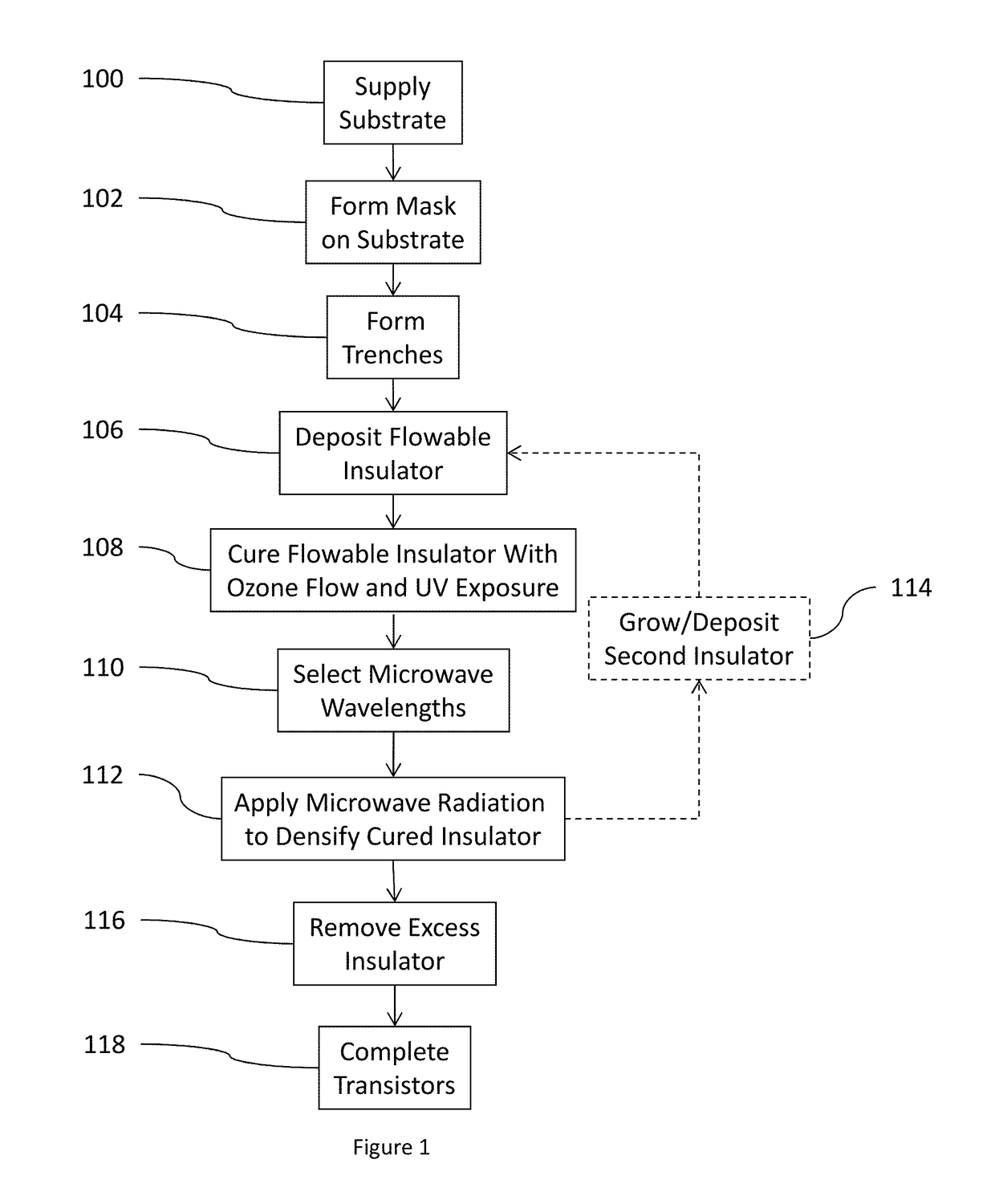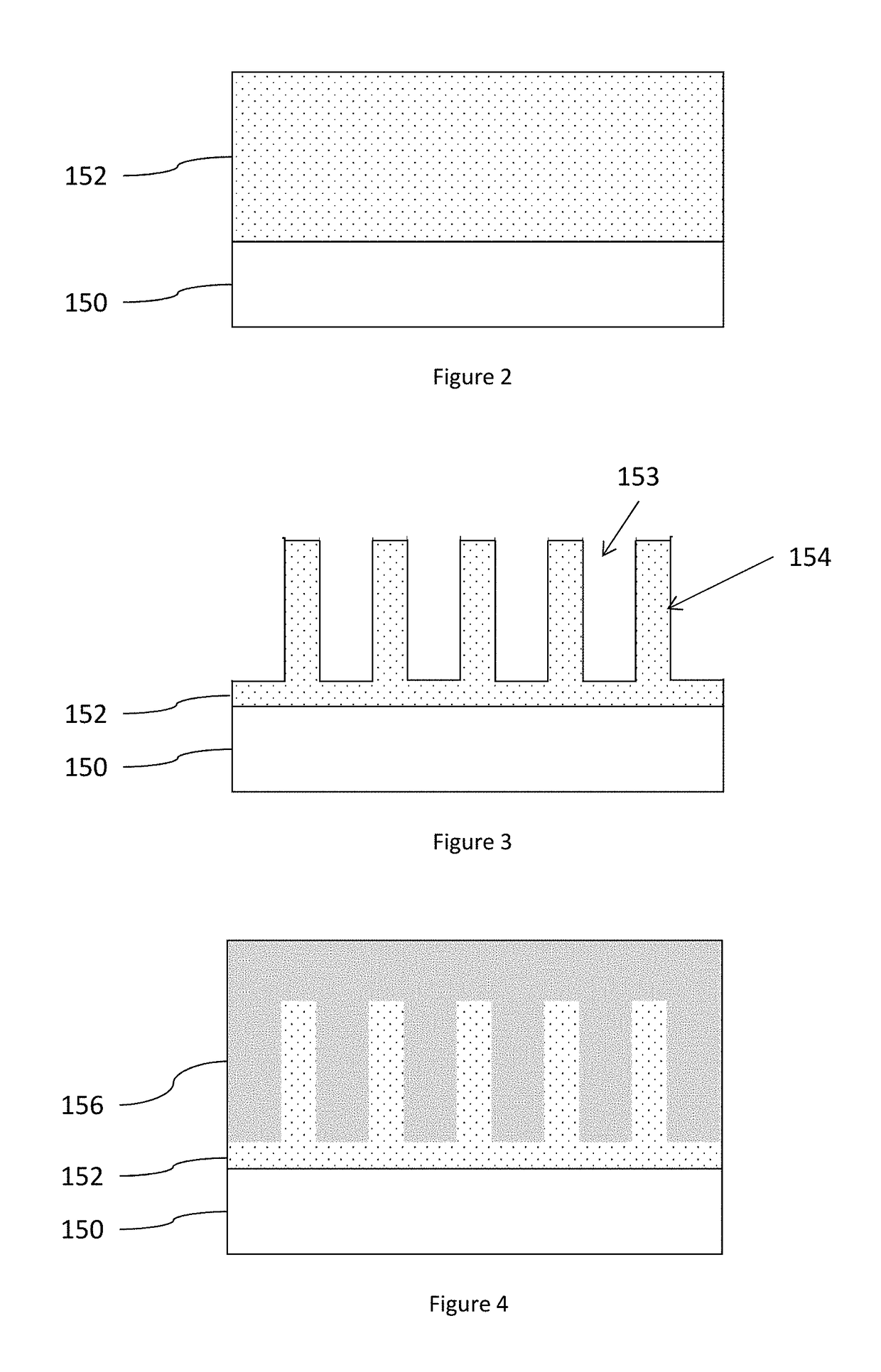Microwave annealing of flowable oxides with trap layers
a flowable oxide and microwave annealing technology, applied in the direction of semiconductor devices, electrical equipment, transistors, etc., can solve the problems of incompatibility of density annealing, incompatibility of steam processing with materials, and inability to cure oxides, etc., to achieve the effect of increasing the density of the cured insulator
- Summary
- Abstract
- Description
- Claims
- Application Information
AI Technical Summary
Benefits of technology
Problems solved by technology
Method used
Image
Examples
Embodiment Construction
[0018]As noted above, the annealing processes used for densification of flowable oxides can be incompatible with manufacturing flows that require temperatures to remain below a temperature limit (e.g., 500° C., etc.). In view of this, the methods and systems herein convert the flowable insulator formed in the flowable chemical vapor deposition (FCVD) processing to SiO2 at temperatures below 500° C. (e.g., 250° C.-300° C.), without using an oxidizing steam anneal (and without affecting wet etch rates).
[0019]More specifically, the methods and systems herein reduce the temperature used for flowable oxide densification to below 500° C. by forming trap layers (e.g., nitrogen rich atomic clusters), and coupling later applied microwave energy to these trap layers. For example, such dielectrics are useful for STI and ILD applications, as well as middle of line (MOL) gap fill structures, where a non-oxidizing ambient is beneficial (in addition to a thermally restricted flow).
[0020]This discl...
PUM
 Login to View More
Login to View More Abstract
Description
Claims
Application Information
 Login to View More
Login to View More - R&D
- Intellectual Property
- Life Sciences
- Materials
- Tech Scout
- Unparalleled Data Quality
- Higher Quality Content
- 60% Fewer Hallucinations
Browse by: Latest US Patents, China's latest patents, Technical Efficacy Thesaurus, Application Domain, Technology Topic, Popular Technical Reports.
© 2025 PatSnap. All rights reserved.Legal|Privacy policy|Modern Slavery Act Transparency Statement|Sitemap|About US| Contact US: help@patsnap.com



